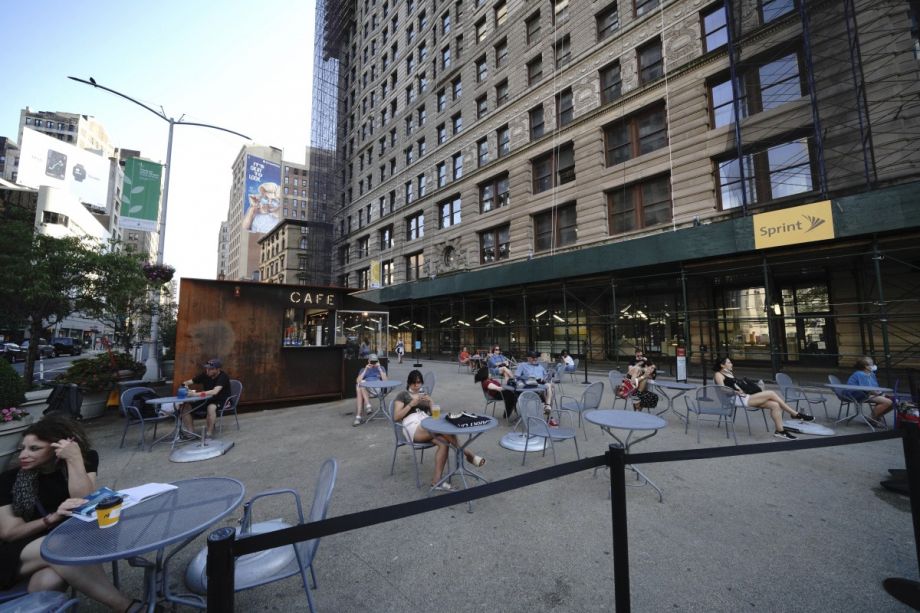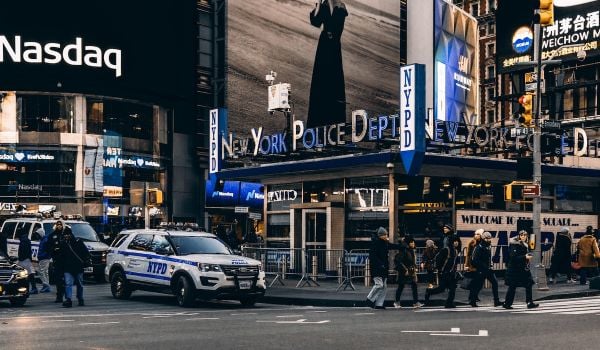Welcome to “The Mobile City,” our weekly roundup of newsworthy developments in urban transportation.
In the longstanding fight between cars and people in cities, COVID-19 seems to have given people the upper hand. Those people now have a new ally: restaurants who see those curbside parking spaces and parking lots as crucial to their survival, at least in the short term. Restaurants want to fill those spaces with tables rather than cars, and officials in a number of cities have their back.
Of course, for the pro-city crusaders to succeed in their quest, people have to have some other means of getting into, out of and around the city. In most of our large cities, mass transit provides the principal alternative. Yet the COVID-19 pandemic has left the country’s largest transit agencies hanging onto life by just a thread, and they are pushing Washington for another round of assistance to avoid shutting down entirely.
One campaign put forth by racial justice activists offers a possible source for some of that money in the longer term. The money we now spend on having cops enforce traffic laws, some say, should be spent instead on less forceful means of enforcement — and the money saved by doing that should go to fund transit instead. At least one big-city transit agency is making the case for doing this directly to its city government.
Restaurants Seek to Reclaim Parking Spaces as a Survival Strategy
Even in those parts of the country that may be moving to reopen faster than they should, officials are placing capacity restrictions on public accommodations and shops in order to reduce the spread of the COVID-19 coronavirus. And in several cities, most notably in the Northeast, restaurants have been allowed to serve patrons outdoors before reopening restricted-capacity indoor spaces.
As dining al fresco both pleases diners and enlivens city streets, cities and restaurants alike are turning to parking spaces as the place to provide it. A Bloomberg CityLab article on the trend goes so far to suggest that “Al Fresco Dining is the Restaurant Industry’s Best Hope.” While it notes that even this path to survival has risks, it points out that with curbside pickup, takeout and indoor capacity restrictions eating into restaurants’ profit margins, the open-air route represents the best alternative restaurants have for recouping some of that lost income.
And in both cities and suburbs, restaurants without outdoor patios really have only one option: Turning those parking spaces into tables, even in cities that already allow sidewalk dining. The article notes that restaurateurs and city officials in at least four cities are moving to open up more street space for outdoor dining and that restaurant owners in several other cities, including New York, are lobbying for street closures to allow their diners safe space to eat.
The article also notes that these moves have historical precedent: in the “Spanish flu” pandemic of 1918-20, several cities mandated that some activities take place only outdoors.
The move to take space back from cars and give it to diners is getting support from across the ideological spectrum as well. Sara Bronin, a law professor and chair of Hartford’s planning and zoning commission, argued on Fox Business that cities should at least temporarily suspend, if not scrap entirely, zoning ordinances that mandate a certain amount of parking for businesses in general. “As small businesses expand outdoor operations for the long haul, reinventing parking lots and even street parking will show people what space currently dedicated to cars can become,” she said. “And our cities – which are now at times eerily quiet – will become the lively, vibrant places they always should have been.”
Transit Systems Say Additional Funding Is Needed to Stave Off Shutdowns
If, as many urbanists argue, we still need to reduce auto commuting even in the COVID-19 era in order to preserve the environmental gains caused by our nearly empty streets, people will still need other means of getting around. And in our large cities, mass transit will continue to provide that other means for many, even most, residents.
But not if they can’t operate due to lack of funds. The head of the nation’s largest transit system, New York Metropolitan Transportation Authority Chair Patrick Foye, told Bloomberg Television June 22 that unless it gets another infusion of $3.9 billion for operating assistance, it will go broke by August.
Both the White House and the Democratic-controlled House of Representatives have big infrastructure spending proposals that would provide that money. The House’s INVEST (Investing in a New Vision for the Environment and Surface Transportation) in America Act proposes $500 billion in spending on a range of transportation projects, including operating assistance for transit agencies. Smart Cities Dive reports that a coalition of transit advocates and mobility-industry companies is lobbying Congress to pass the bill, which would for the first time prioritize access over free-flowing traffic in setting spending priorities.
The INVEST in America Act is the largest part of a $1.5 trillion infrastructure package the House has proposed called the Moving Forward Act. Meanwhile, President Trump has proposed his own $1 trillion infrastructure stimulus plan. According to The Hill, both the Democrats’ proposal and the President’s face tough going in the Senate, where Majority Leader Mitch McConnell (R-Ky.) says either bill would add too much to an already-huge Federal budget deficit.
Another Place to Put Police Funding: Into Transit Coffers
Activists who have been demanding that city and state governments “defund the police” argue that many of the tasks we ask police officers to do would be better handled by others not trained first and foremost to fight crime with force. One of those tasks is enforcing traffic laws, which some argue that both unarmed safety patrols and robotic cameras could do just as well if not better.
In at least two cities, some argue that the money saved by taking traffic enforcement out of the hands of the cops should go towards improving local transit.
Correspondent Martin Csongradi makes this argument explicitly in a post on the Greater Greater Washington blog. In it, he argues that Baltimore should use the money to provide the high-quality transit service its Black communities have been denied for decades. Citing a history of promises not kept and a pro-suburban bias in how Annapolis allocates funding for transit, Csongradi recommends the city put the $22 million it voted to cut from the Police Department budget into beefing up the city-run Charm City Circulator bus service. This bus network, he continues, could even become the backbone of a bus rapid transit network that would compensate for the rapid transit and light metro lines Baltimoreans were promised but never given.
Officials at Fort Worth’s Trinity Metro are not making an explicit argument for shifting funds from cops to transit, but the Fort Worth Star-Telegram notes that the agency would at least like to get the same deal the police get: a half-cent sales tax to fund operations.
Voters in Fort Worth will be asked to reauthorize the half-cent sales tax for the city’s Crime Prevention District this year. That tax brings in $80 million in revenue annually. Trinity Metro also gets revenue from another half-cent sales tax, but the same amount of revenue funds a transit system that only provides bare-bones service for the transit-dependent.
Trinity Metro is asking the Fort Worth City Council to pony up an additional $10 million for immediate system improvements, but Trinity Metro Board Chair Jeff Davis says more could and should be done. “Funding for the Police Department is pretty important, but the city has gotten what it paid for with a half-cent for transit,” Davis said in a phone interview with the Star-Telegram. “When you have a half-cent to transit, you get a beefed-up police system, which is never a bad thing, but you do it at the expense of public transportation which most other cities in the state of Texas did not do.”
And Davis also casts the issue in social-justice terms, saying that the city needs to come to terms with how a lack of transit access has fueled the division between haves and have-nots in the community.
Know of a development that should be featured in this column? Send a Tweet with links to @MarketStEl using the hashtag #mobilecity.

Next City contributor Sandy Smith is the home and real estate editor at Philadelphia magazine. Over the years, his work has appeared in Hidden City Philadelphia, the Philadelphia Inquirer and other local and regional publications. His interest in cities stretches back to his youth in Kansas City, and his career in journalism and media relations extends back that far as well.
Follow Sandy .(JavaScript must be enabled to view this email address)
















